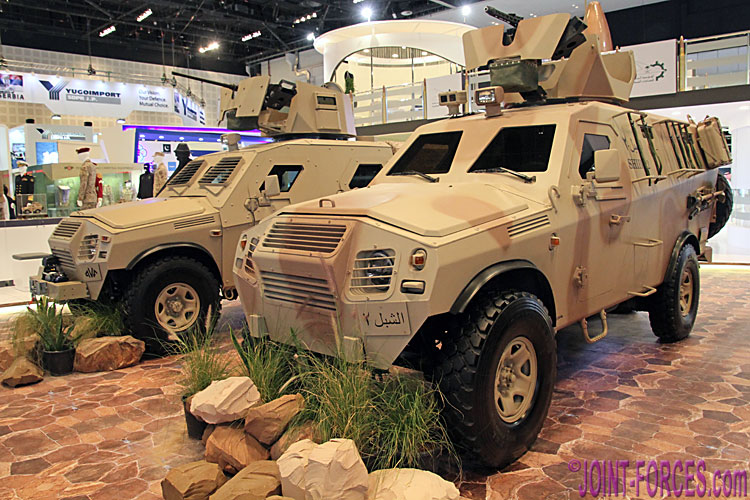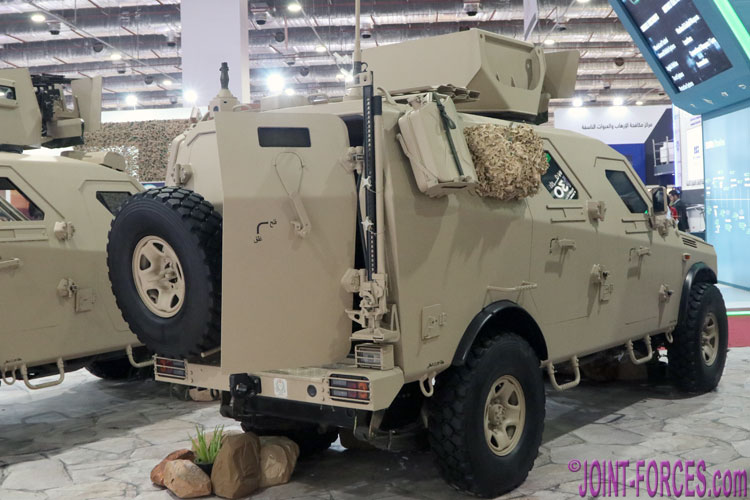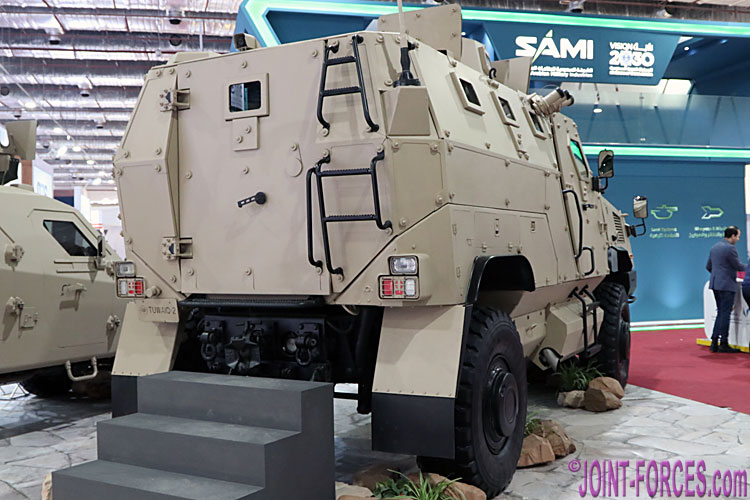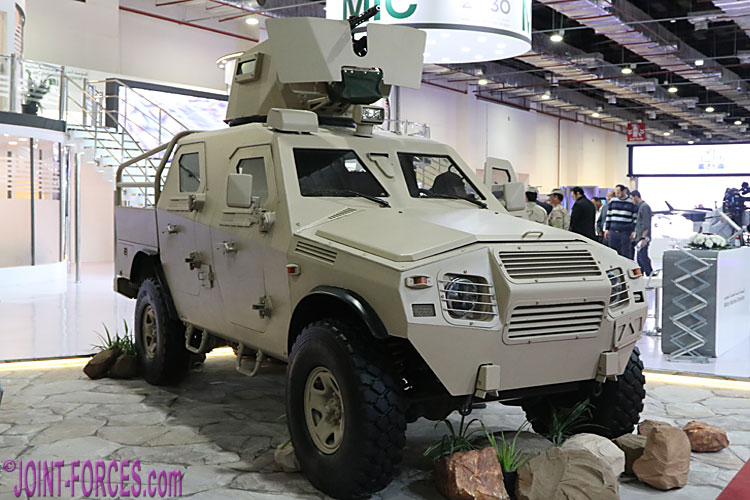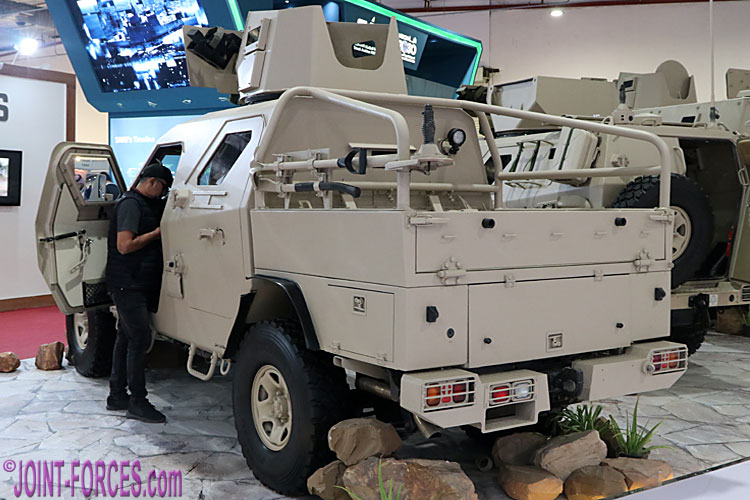Armored Vehicles & Heavy Equipment Factory or AVF of Saudi Arabia is closely affiliated to the Kingdom’s state-run Military Industries Corporation, writes Bob Morrison.
Located in Dammam, the major Persian Gulf port and capital of the Eastern Province of Saudi Arabia, AVF was originally established to modernise the Royal Saudi Land Forces’ armoured vehicle fleet of Panhard AML-90 scout cars and M3 APCs but for over a decade it has been manufacturing a range of its own vehicles as well as up-armouring light softskin trucks. The company has, according to its own publicity material, produced a number of different vehicles for both the Saudi Armed and Security Forces, in addition to those of some other Gulf countries, though these are seldom seen outside the Arab world.
I first came across AVF in 2017 at IDEX, the biennial International Defence Expo held in Abu Dhabi, and caught up with the company again at the inaugural EDEX in Cairo last December. At IDEX17 we were able to snap three vehicles, a SHIBL-2 which translates as LION CUB Mk.2, an APV-2 or Armoured Patrol Vehicle Mk.2 variant, and a TUWAIQ-2 (which is named after the massive Jabal Tuwaiq escarpment to the east of Riyadh). At EDEX18 we photographed two variants of the APV-2, a four-door version with rear cargo area and a new six-door version with full-length body allowing two additional troops to be carried, plus a TUWAIQ-2 Mine-Resistant Armour-Protected vehicle or MRAP.
In addition to producing a number of softskin 4×4 light truck conversions on a Toyota chassis, including both utility vehicle and recoilless rifle variants, the company also manufactured an armoured two-door pick-up truck on an earlier model chassis from the same Japanese company; this was known originally as the APV but is now reclassified APV-1. From the rear of the two-man cab forward this vehicle had a similar shape to the APV-2, but outer body armour panels on the vehicle displayed at IDEX gave the APV-1 the appearance of being bolted construction rather than welded and the gunner who manned the turret-mounted top cover machine gun positioned over the forward portion of the load bed was protected by what appeared to be relatively rudimentary design housing with flat roof and side armour panels. Company literature stated modular armour and glazing of the crew cabin and rear deck station corresponded to FB7 (CEN1063) ballistic protection level while the engine bay section corresponded to FB6 (CEN 1063). The APV-1 was powered by a 230HP V-6 engine and had a gross vehicle weight of 4.2 tonnes.

From their uniform and weapons these troops are almost certainly Saudi SpecOps – their vehicle is a two-tone camouflaged SHIBL-2 [© Saudi MoD]

APV-2 at IDEX17 – this vehicle appears to have a thin skin of appliqué armour – note also the winch [©BM]
The body of four-door APV-2 armoured pick-up displayed at EDEX18 not only looked more refined than the earlier version spotted at IDEX17 but also had a higher sit suggesting to me it might be on a Toyota Hilux rather than 70-series Land Cruiser chassis, but I have not been able to confirm this. This vehicle had an open rear cargo bed with sloping tubular roll cage and there was a firing port in the rear cab face as well as one under each side window. The six-door personnel carrier version alongside it was almost identical, other than having a full length body and twin rear doors. Both vehicles had machine gun turrets, of slightly different design. I was unable to pick up any dimensions for these, but there is a chance I may be able to ascertain them over the next six weeks or so and if I do I will update this article.

The Unimog-based TUWAIQ-2 MRAP can transport two plus eight troops and be fitted with machine gun turret or RWS [©BM]
Footnote: At time of writing I have not yet been able to find pictures of the AVF TUWAIQ-2 in service but the Saudi Ministry of Defence has issued the above image of a SpecOps squad with what is clearly an AVF SHIBL-2 behind them.
{ images © Bob Morrison unless noted }
*If you came to this page from Facebook or Twitter please Share or Retweet. Thanks.
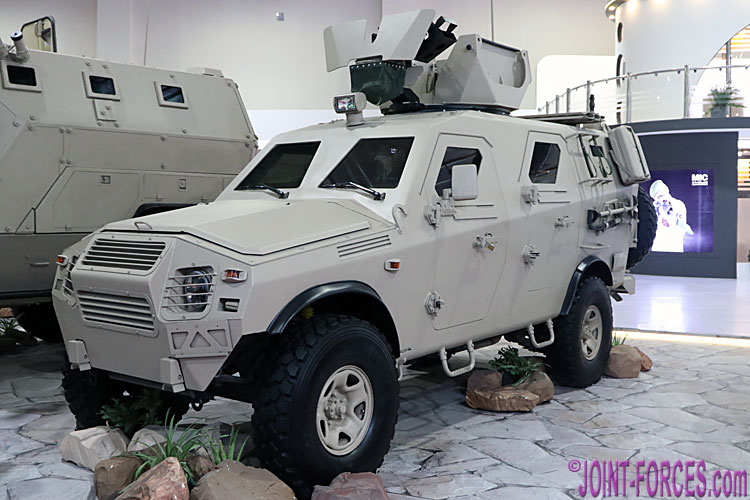
Six-door APV-2 at EDEX 18 with TUWAIQ-2 alongside – note sliding firing ports below door glazing and rear body vision block [©BM]


